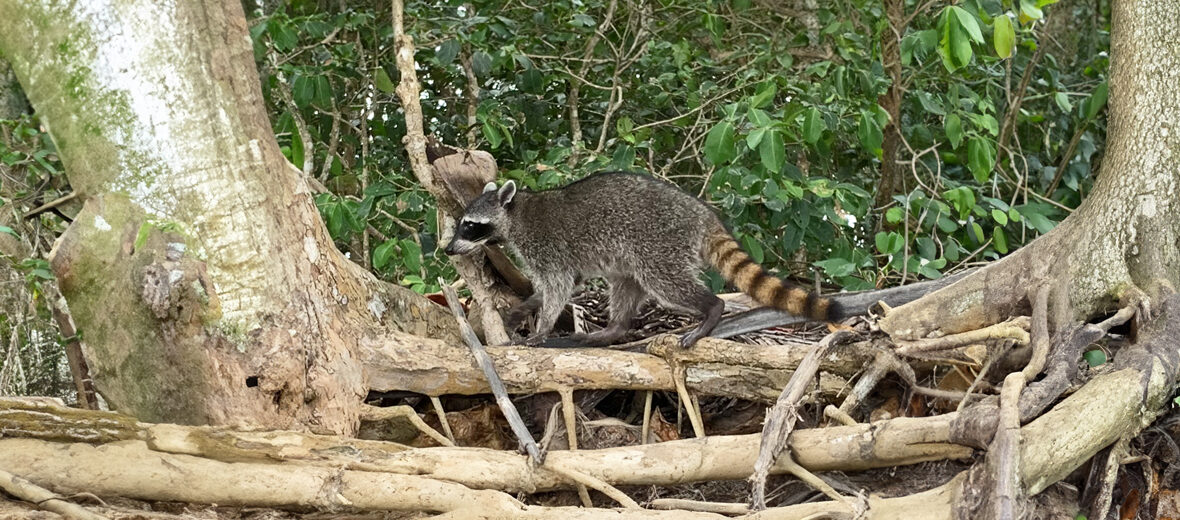
The crab-eating raccoon, aka southern raccoon, or South American raccoon, dwells in marshlands and jungle habitats throughout Central and South America. These critters are seldom found too far from water. They are threatened by habitat loss at the hands of residential and commercial developments, logging, farming, and ranching; hunting; trapping; and recreational activities that interrupt their feeding and breeding efforts. However, they are listed as Least Concern by the IUCN, due to their abundant numbers.
First the Stats…
Scientific name: Procyon cancrivorus
Weight: Up to 14 lbs.
Length: Up to 31 inches, plus up to a 22 inch tail
Lifespan: Up to 14+ years
Now on to the Facts!
1.) These raccoons are abundant, however, their populations are decreasing throughout their ranges.
2.) In the Tupi–Guarani language, they are known as aguará or agoará popé.
3.) Contrary to their name, they do not only eat crabs, but they do prefer them.
4.) Crabs, lobsters, crayfish, various other crustaceans, shellfish – like clams & oysters, small amphibians, fish, small turtles, turtle eggs, insects, nuts, fruits, vegetables, and even carrion (dead animals) are all on the menu.
5.) Like other raccoon species, the crab-eating raccoons are nocturnal (active at night).
But wait, there’s more on the crab-eating raccoon!
6.) These raccoons are more arboreal (spend their lives in trees) than their other cousins.
7.) These raccoons host the intestinal parasite Pachysentis procyonis, an acanthocephalan (a group of parasitic worms known as thorny-headed worms or spiny-headed worms) whose name hails from the genus of the crab-eating raccoon.
Did you know…?
Even though they look smaller and more streamlined, they are similar in build to their northern cousins. Therefore, Allen’s rule doesn’t apply to these critters. Allen’s rule is an ecogeographical rule formulated by Joel Asaph Allen in 1877, stating that animals from cold climates have shorter, thicker limbs, & appendages than those from warm climates.
8.) These critters are solitary and only come together to mate.
9.) Unlike common raccoons that adapt quickly to human environments, the crab-eating raccon prefers to steer clear of humans.
10.) Females undergo up to a 73 day gestation (pregnancy) that yields up to 7 kits.
But wait, there’s still more on the crab-eating raccoon!
11.) Typically, females only breed once a year. However, if all a female’s kits are killed or die, she will mate a 2nd time.
12.) Males take no part in the rearing of the kits.
Did you know…?
Crab-eating raccoons have superb night vision and excellent hearing.
13.) The female will become quite defensive and even aggressive while rearing her young.
14.) Jaguars, ocelots, and various raptors all prey on these critters.
15.) Seeing as their territories overlap with the common raccoon, interbreeding can occur that results in hybridization.
Now a Short Crab-Eating Raccoon Video!
Be sure to share & comment below! Also, check out the Critter Science YouTube channel. Videos added regularly!
Want to suggest a critter for me to write about? Let me know here.
Some source material acquired from: Wikipedia & IUCN
Photo credit: Mario Roberto Durán Ortiz




